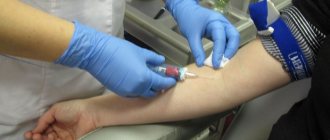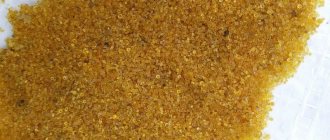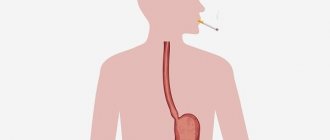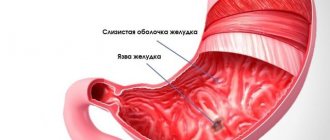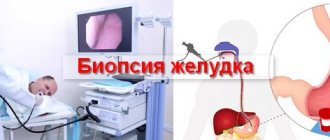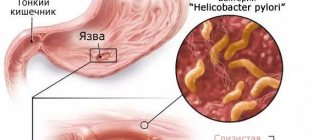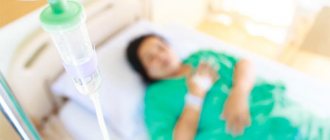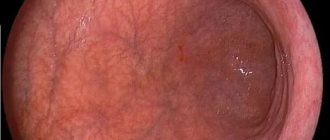Among all diagnostic procedures aimed at early detection of diseases of the digestive tract, preference is given to the study of endoscopy (esophagogastroduodenoscopy). This method allows you to visually assess the condition of such parts of the gastrointestinal tract as the esophagus, stomach and duodenum, and identify benign and malignant changes, inflammatory processes, dystrophic and other diseases of the mucous membranes.
The main value of esophagogastroduodenoscopy is its accessibility and high information content. If necessary, a visual examination is combined with the collection of biological material in order to make the most correct diagnosis.
Diagnostic endoscopy: what is it?
The essence of diagnostic esophagogastroduodenoscopy is to examine the digestive tract using a special optical device - a probe equipped with a video camera capable of producing a clear image on a monitor screen. The design of the device may also include a surgical manipulator: a loop or forceps, a coagulator, and so on. They are used when therapeutic and diagnostic esophagogastroduodenoscopy is performed, or when performing a classic diagnostic endoscopy with the need for a biopsy or examination with a test for Helicobacter pylori.
During the procedure, the doctor examines:
- mucous membranes of the esophagus;
- sphincter separating the esophagus and stomach;
- mucous membranes of the pyloric (upper and middle) part of the stomach;
- mucous membranes of the body and fundus of the stomach;
- sphincter separating the stomach from the duodenum;
- mucous membranes of the duodenum;
- the openings of the pancreas and gall bladder, opening into the duodenum (duodenal papillae).
During endoscopy, the doctor evaluates the general structure of the mucous membranes, its color, notes the localization, size and nature of the changes: hyperemia, swelling, bleeding, ulceration, the presence of foreign objects, and so on. According to the method of access, esophagogastroduodenoscopy is divided into two types:
- Classic - the probe is inserted through the oral cavity. Used in most patients.
- Transnasal - the probe is inserted through the nasal passage. It is used for a strong gag reflex and in children.
An EGDS examination is carried out on an outpatient basis, since it lasts no longer than 5-10 minutes and does not require the use of general anesthesia. Only in some cases can the doctor decide to perform esophagogastroduodenoscopy under general anesthesia.
What is the difference between the studies?
In order to understand how FGDS differs from EGDS, it is necessary to perform a morphological analysis of each term. The decoding of the abbreviations is as follows: fibrogastroduodenoscopy and esophagogastroduodenoscopy.
The word “fibrogastroduodenoscopy” consists of the roots:
- “fibro-” – an instrument for endoscopic examination of the digestive tract;
- “gastro-” – stomach;
- “duodeno-” – duodenum;
- “-scopy” – examination.
That is, FGDS is a diagnostic measure that is a study of the tissues of the stomach and duodenum. The prefix “esophago” is translated as “esophagus”, that is, EGD or endoscopy includes examination of not only the stomach and small intestine, but also the esophagus, in order to detect visual signs of a number of different somatic pathologies.
Esophagogastroduodenoscopy with biopsy
Carrying out endoscopy with biopsy technically differs little from the usual diagnostic procedure. The same fiber-optic probe with a video camera is used, but the design is supplemented with forceps, a loop for collecting biological material and a coagulator. This type of endoscopy is used primarily when a cancerous tumor of the esophagus or stomach is suspected.
Esophagogastroduodenoscopy with biopsy begins as a routine procedure - with examination of the mucous membranes. After determining the location of the tumors, the doctor plucks off a small fragment of the polyp or tumor, which will then be sent for histology. After this, coagulation of the wound surface is carried out: a short electrical discharge “seals” the vessels, preventing bleeding.
Good to know! Esophagogastroduodenoscopy with biopsy lasts a little longer than a regular survey EGDS - about 15-25 minutes.
How to prepare for endoscopy psychologically?
An important factor that may interfere with the study is the psychological mood of the patient. Because of fear, many refuse the procedure, so the doctor’s task is to convince of the need for endoscopy, objectively assess the person’s health status and explain how the results will help.
The doctor should talk in detail about how the study is carried out so that the person can prepare himself morally. During the procedure itself, it is better to try to be distracted, but try to listen to what the specialist is saying. For overly sensitive patients, general anesthesia is recommended.
Indications and contraindications
Gastroenterologists prescribe endoscopy of the stomach if they suspect inflammatory, tumor, ulcerative or other processes in the organ, indicated by the following symptoms:
- dull, sharp, bursting or cutting pain in the epigastrium (upper abdomen under the pit of the stomach) after meals or between meals;
- atypical sensations after eating - a feeling of fullness in the stomach or a persistent feeling of hunger;
- lack of appetite;
- nausea and/or vomiting;
- flatulence, abdominal cramps, belching air.
Survey gastroscopy of the esophagus and stomach is important in making a diagnosis if esophagitis is suspected. This condition is often accompanied by an atypical symptom - a sensation of a foreign body in the throat, which interferes with normal eating. EGD is also prescribed if there is a change in the external color of the stool. Black feces are a typical sign of gastric bleeding: with a peptic ulcer of the stomach against the background of bleeding, the hemoglobin in the blood coagulates under the action of the digestive nipples, acquiring a black color.
Esophagogastroduodenoscopy allows a patient with acute pancreatitis to collect secretions secreted from the duodenal papillae. After microscopy of the material, bacterial culture and other studies, the doctor is able to find out the nature of the inflammation and select an effective treatment. Endoscopy is no less important in diagnosing gastric ulcers, gastritis and other organ diseases: together with the examination, hp testing is carried out (the name of the procedure sounds like endoscopy with a helic test), which allows you to determine the cause of damage to the mucous membranes.
Good to know! Esophagogastroduodenoscopy is often used to refute gastroenterological problems in patients with mental and neurological diseases. Such patients often experience unpleasant stomach symptoms and eating disorders, which are in no way related to the functional state of the gastrointestinal tract.
As for contraindications, endoscopy has relatively few. This method, unlike others, is not prohibited for use during pregnancy and childhood. Doctors consider exacerbations of chronic diseases, acute inflammatory or infectious diseases of the ENT organs as relative contraindications to planned esophagogastroduodenoscopy. In such situations, the examination is postponed until the patient undergoes treatment.
Doctors call absolute contraindications to EGD conditions that make the examination difficult and lead to life-threatening consequences:
- aortic valve stenosis;
- cardia insufficiency in the stage of decompensation;
- increased risk of bleeding (low platelet levels and a decrease in prothrombin time by 50% or more);
- severe upper respiratory tract diseases (asthma);
- severe anemia.
With particular caution, the study is carried out in elderly patients, patients with arterial hypertension, weakened patients and those who suffer from mental disorders.
Indications
Gastroscopy (EGDS, FGDS) is one of the main diagnostic methods in gastroenterology. It is available to most medical institutions and acts as an initial instrumental examination in identifying any complaints in a person that may be associated with dysfunction of the upper gastrointestinal tract (with the exception of swallowing disorders). Let us dwell on the main indications for its implementation.
- Suspicion of pathology of the esophagus, stomach, duodenum and surrounding structures : bloody vomiting or the presence of black tarry stool (to determine the source of bleeding); acute or chronic pain in the upper abdomen; dyspepsia, especially in people over 45 years of age (nausea, belching, heartburn, bloating, feeling of fullness after eating); anemia of unknown origin; clarification of the localization of foreign bodies.
- Evaluation of the effectiveness of treatment for diseases of these organs.
- The need to distinguish benign and malignant processes (tumors, foci of dysplasia) from each other and determine its prevalence.
Help Gastroscopy can be used not only for diagnosing diseases, but also for the purpose of carrying out therapeutic procedures (removal of foreign bodies, stopping bleeding, biopsy, removal of polyps, etc.).
Preparation rules and diet
A week before the endoscopy, the patient will have to undergo a blood test for hemoglobin, biochemical and general clinical analysis, which will help identify hidden diseases related to absolute or relative contraindications. Their results should be ready a couple of days before diagnosis so that the doctor can assess all the risks.
Particular attention should be paid to the diet, the purpose of which is:
- reducing irritation of the mucous membranes of the digestive tract - exclude alcoholic drinks, canned food, pickles, hot spices and carbonated drinks from the diet;
- restoration of peristalsis - include cooked vegetables and fruits, buckwheat and rice groats, durum pasta in the diet;
- elimination and prevention of fermentation and putrefactive processes in the intestines, which can provoke gas formation - exclude sausages, legumes, cheeses, milk, fresh vegetables and fruits, bran from the menu.
It will not take long to follow special nutritional rules: 3-5 days will be enough to bring the gastrointestinal tract to relative normality. Otherwise, the patient can lead a normal lifestyle; there are no restrictions on physical activity.
Per day
On the eve of the examination, a light steamed meal is recommended. Last meal no later than 20:00. For dinner you can eat pureed soup, soft puree, poultry soufflé or casserole. After dinner, you can drink unlimited amounts of tea or water.
On the day of the event
There should not be a single meal before the start of endoscopy. Drinking is not limited, but the last portion of water should be drunk no later than 2 hours before the endoscopy. Smoking patients are advised to give up cigarettes and chewing gum. Those who are prescribed medication should not take pills in the morning. They can be accepted after the study.
Preparation for endoscopy of the stomach
Endoscopy is prescribed by a doctor according to indications, recommendations are given based on the specifics of its implementation - whether a biopsy is needed or not, what type of anesthesia will be used.
Preparation for the study also depends on when the procedure will be performed and the patient’s bad habits. Since the doctor’s manipulations can lead to negative reactions, the patient is warned about this in advance.
Analyzes
To reduce the risk of unpleasant symptoms and complications, the doctor recommends the following tests:
- general blood test;
- coagulograms;
- electrocardiograms (for patients with cardiovascular pathologies).
EGDS preparation
If necessary, determine the blood type and Rh factor. It is also necessary to establish whether the person has hepatitis B, C, or whether he has HIV.
What does the doctor need to know about the patient?
Endoscopy (preparation for the study differs depending on the person’s health status) is carried out after the doctor clarifies important points, ignoring which can provoke unpleasant consequences.
The patient must notify the doctor about taking medications and health problems. First of all, the doctor will ask whether the patient has cardiovascular pathologies and whether heart valve replacement has been performed.
People with heart defects who are taking anticoagulants will need special preparation. For a certain period, medications are canceled, before the procedure it is recommended to perform a control test for the INR level, and before the study (2 hours before) an antibiotic is administered for prophylactic purposes.
The procedure, which is carried out to determine Helicobacter pylori infection, also has its own characteristics. The patient should warn the doctor if he is taking antiulcer drugs or antibacterial drugs. If you do not stop taking such medications, the result will be unreliable.
Esophagogastroduodenoscopy with biopsy
Endoscopy (preparing for the study can prevent the development of severe consequences) with a biopsy, if some recommendations are not followed, can result in heavy blood loss. During the procedure, a fragment of the mucous membrane is taken, resulting in a small wound.
To avoid blood loss, it is necessary 7 days before the study:
- stop taking medications that can thin the blood (Aspirin, Warfarin);
- do not use complexes that contain vitamins A, F, C, which can thin the blood and irritate the mucous membranes;
- reduce the consumption of foods that contain large quantities of vitamin C and fruit acids;
- give up spices that activate blood circulation (various types of pepper, saffron, ginger).
If a patient has to take blood thinning medications on an ongoing basis, he should consult with a specialist regarding the regimen and dosage of such medications in advance.
EGDS in the morning
Endoscopy (preparation for the study depends on the time of its conduct) is most often prescribed in the morning. The patient is not allowed to have breakfast; drinks are also excluded.
On the eve of the study you can have dinner:
- cottage cheese casserole;
- stewed or steamed vegetables;
- pureed rice, buckwheat porridge or semolina;
- chicken soufflé.
You can eat food only until 22.00. After this you can only drink. Herbal infusions, plain water, and diluted juices are allowed. Medications are taken in the evening and should be stopped in the morning. In extreme cases, injection of the drug is allowed.
EGD in the afternoon
If the diagnosis is carried out in the afternoon, then you can have breakfast. In this case, at least 8 hours must pass between breakfast and the procedure.
When can you have breakfast:
| When is the test scheduled? | Last morning meal time |
| After lunch | 6 hours |
| Towards the end of the working day | 8-9 hours |
| In evening time | 10-11 o'clock |
How is EGDS done?
The EGDS procedure is performed in a gastroenterologist’s office in a clinic or day hospital. Before the examination begins, the doctor examines the patient’s mouth and throat, after which he performs premedication: he irrigates the throat and root of the tongue with local anesthetics to reduce their sensitivity and avoid the urge to vomit during insertion of the device. After this, the patient is placed on the couch on his side.
The examination is carried out according to a single algorithm:
- A mouthpiece is inserted into the patient's oral cavity - a tab that will prevent the jaws from completely closing. In the middle of it there is a hole into which the doctor inserts a gastroscope tube.
- After inserting the tube into the oral cavity, the patient is asked to relax the larynx and throat, lower the tongue so that the device can easily penetrate the esophagus. Sometimes the doctor asks the patient to make swallowing movements. If the urge to vomit occurs, the patient is asked to breathe slowly and as deeply as possible. This technique reduces nausea.
- After inserting the tube into the esophagus, the doctor begins supplying air to expand its cavity and thoroughly examine the mucous membranes. At this moment, the patient may feel fullness, and after moving the gastroscope deeper, a kind of belching may appear.
- After examining the esophagus, the doctor gradually inserts the gastroscope tube into the stomach, and then into the duodenum. All this time he turns the tube to examine all the surfaces of the organs. At the same time, photographs are taken or video is recorded.
If necessary, during esophagogastroduodenoscopy, the doctor measures the acidity of gastric juice and the contents of the duodenum, and takes a pinch of the mucous membrane for histology.
How long does esophagogastroduodenoscopy take?
A typical survey esophagogastroduodenoscopy lasts no more than 5 minutes. The procedure may take a little longer, during which the doctor will have to measure the acidity of the stomach. The longest diagnostic process awaits patients who require a biopsy. This study lasts up to 15-20 minutes.
Is it possible to use anesthesia for endoscopy?
Conducting studies with anesthesia during endoscopy is not widespread, since the procedure is generally painless and takes little time. The exception is children under 10 years of age. They always undergo esophagogastroduodenoscopy under sedation. This is a special type of anesthesia in which the patient is immersed in a short but deep sleep. Drugs that are used for endoscopy while the patient is asleep act more gently and have fewer side effects and contraindications.
Important! An examination under anesthesia is carried out for adult patients if they have a reduced pain threshold, an increased gag reflex, or severe mental instability.
Nausea during the procedure
To reduce nausea before EGDS, the doctor may prescribe prokinetics Motilium or Cerucal. If their effect is insufficient and when the tube is inserted there is a urge to vomit, interfering with a normal examination, the procedure may be postponed or esophagogastroduodenoscopy may be continued using general anesthesia.
What reveals
Esophagogastroduodenoscopy shows almost any changes in the condition of the mucous membranes of the digestive tract:
- changes in the structure of the mucous membranes - erosion, stomach ulcers, erosive bulbitis and others;
- foci of inflammation, irritation of the mucous membranes of the esophagus and stomach;
- protrusions on the walls of the esophagus (diverticula);
- varicose veins of the esophagus;
- inflammatory processes on the mucous membranes - cholecystitis, bulboduodenitis, antral gastritis and others;
- changes in the functioning of valves and sphincters - reflux and their consequences;
- neoplasms - polyps, malignant tumors;
- foreign objects;
- sources of bleeding.
In addition, the doctor can assess the functional state of individual parts of the digestive tract.
How is esophagogastroduodenoscopy performed?
Before the study, the main thing is not to be afraid and try to relax. If you follow all the doctor’s recommendations, the unpleasant procedure will quickly end, since a complete examination requires only a few minutes.
Gastroscopy is performed with the patient lying on his left side. In order to facilitate its implementation , the doctor treats the patient's throat with an anesthetic in the form of a spray (usually lidocaine is used for this). To prevent the device from biting, a mouthpiece is used. Under visual control, the specialist inserts the device into the oral cavity through the opening of the mouthpiece and then moves it along the digestive tube, examining its various parts and, if necessary, collecting tissue for analysis.
If necessary and after preliminary preparation, the patient may be given anesthesia or sedation . You can learn about the nuances of this procedure from this article. A special approach requires the administration of sedatives to a child. whether this will help make FGDS more comfortable and informative for the baby or whether it will expose it to unjustified risk.
Please note: During the examination,
you should not talk or touch the endoscope with your hands , as such actions make it difficult to carry out and may have undesirable consequences (damage to the mucous membrane of the gastrointestinal tract). It is recommended to breathe deeply and behave calmly.
Risk factors and possible complications
Modern equipment practically does not harm the patient’s health during esophagogastroduodenoscopy, so complications after it are extremely rare. Only 5-8% of patients who underwent EGD with biopsy experience bleeding.
Some risks exist in the presence of pathologies such as varicose veins of the chest and esophagus. Vessels protruding into the lumen of the organ can be easily injured, therefore, starting from stage 2 of the disease, they try not to prescribe esophagogastroduodenoscopy.
Contraindications
The procedure is contraindicated:
- with scoliosis of 4 degrees (when the internal organs are displaced);
- after a stroke;
- in acute myocardial infarction;
- patients with persistent increase in blood pressure;
- if there are congenital anomalies, tumors, due to which the anatomical position of the esophagus is disrupted;
- patients with mental disorders or epilepsy that cannot be treated with medication;
- with cicatricial narrowing of the esophagus.
Conducting research
To reduce discomfort during the procedure, as well as to weaken the gag reflex and the urge to cough, a liquid antiseptic is used. When applied to the mucous membrane, its effect begins very quickly, and upon completion of the manipulation it also ceases its effect quite quickly.
A special mouthpiece is inserted into the patient's mouth to protect the teeth and endoscopic equipment from biting. It is recommended to remove removable dentures first. To reduce nervousness and fear, the patient may be offered a sedative. Therapeutic and diagnostic esophagogastroduodenoscopy is performed with the patient in the lateral position, preferably the left one.
FGDS - does it hurt or not?
After the anesthetic begins to act, the procedure is performed according to this plan:
- A flexible endoscope is carefully inserted through the patient's mouth, passing the esophagus, stomach and into the duodenum. Air is supplied to the equipment to facilitate viewing the mucous membrane by straightening the lumen of the organs.
- To avoid interfering with the progress of the endoscopic equipment, the patient must remain absolutely still. At this moment, he needs to concentrate on his breathing, which should be deep and slow.
- The endoscopist's task is to carefully examine the mucous membrane of all the upper organs of the digestive tract. If necessary, a biopsy can be taken for further histological examination.
- If endoscopy is not only diagnostic in nature, then in the process a narrowed section of the esophagus can be expanded, small foreign bodies, polyps, and small tumors can be removed.
- In order not to provoke the urge to vomit, it is better to abstain from food for an hour after the manipulation. The duration of the study ranges from 5 to 20 minutes.
The most difficult moment of the procedure for the patient is swallowing the endoscope
After the procedure
After gastroscopy, the patient is in a state reminiscent of alcohol intoxication for some time. He comes to his senses after 2-3 hours, when the sedatives stop working. And also, for some time, those who have undergone the study may experience the release of gases from the esophagus or stomach through the mouth and a feeling of fullness in the abdomen against the background of the remaining gases used to inflate the walls of the stomach.
In addition, some patients complain of a tickling or sore throat, dryness, slight hoarseness, or an inflammatory process in the throat. Such sensations can last up to 3 days. You can alleviate the condition by sucking on special lollipops or gargling with a soda-saline solution. As a rule, gastroscopy proceeds without complications. But in rare cases, bleeding, perforation, or secondary infection may occur.
The patient must immediately seek medical help if after the procedure he experiences the following symptoms:
- sharp or aching pain in the abdominal area or spread throughout the abdomen;
- feverish conditions;
- severe shortness of breath;
- profuse vomiting with blood.
Some elderly patients with severe cardiovascular insufficiency may face a serious complication in the form of a heart attack or cerebral hemorrhage. After gastroscopy, you should not drink alcohol or smoke for 24 hours. It is also undesirable to drive for 12 hours.
Sedation during gastroscopy is most often performed with Propofol or Midazolam
What can you eat before the examination? Example menu
To obtain adequate results and avoid the development of negative consequences, it is necessary to give up some foods 3 days before the study.
Prohibited foods in the preparatory period:
| Products | Harm |
| Digest slowly |
| Cause flatulence |
| Irritate mucous membranes |
During preparation for the procedure, the diet should consist of:
- vegetables (can be boiled or stewed);
- mashed porridge;
- light soups (with chicken or vegetables);
- lean meat and fish (stewed or steamed).
Drinks allowed:
- herbal infusions;
- jelly;
- dried fruits compote.
